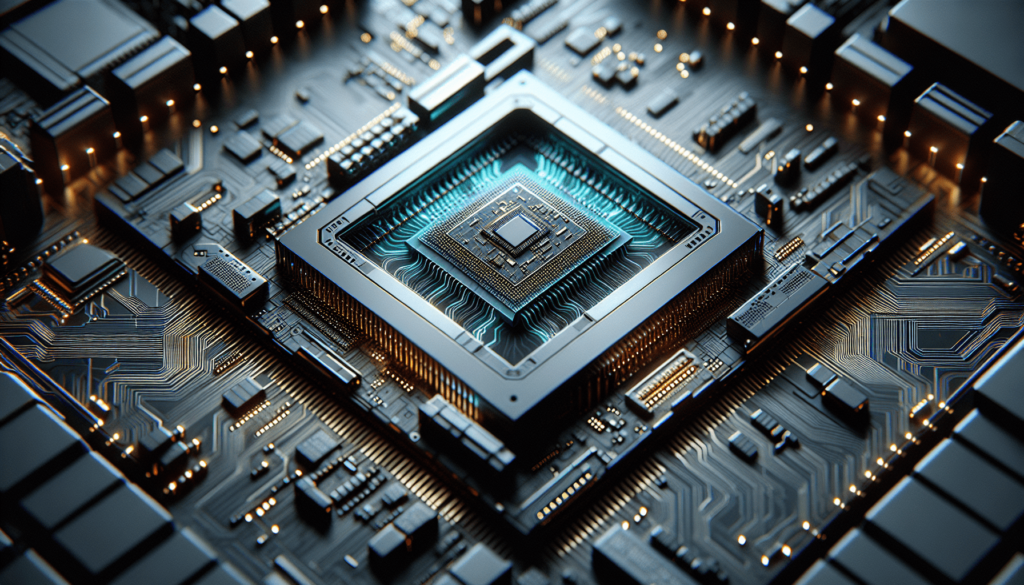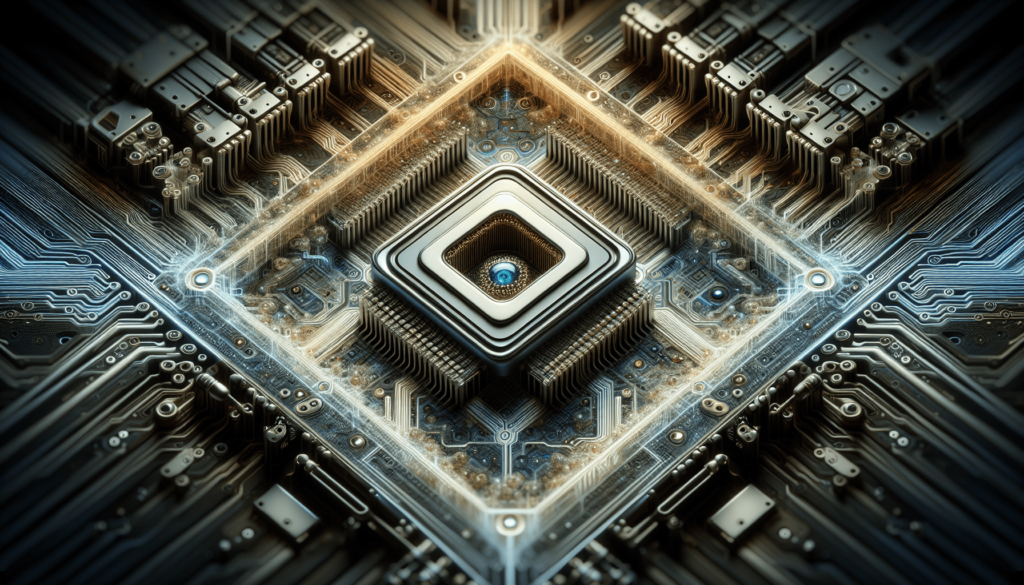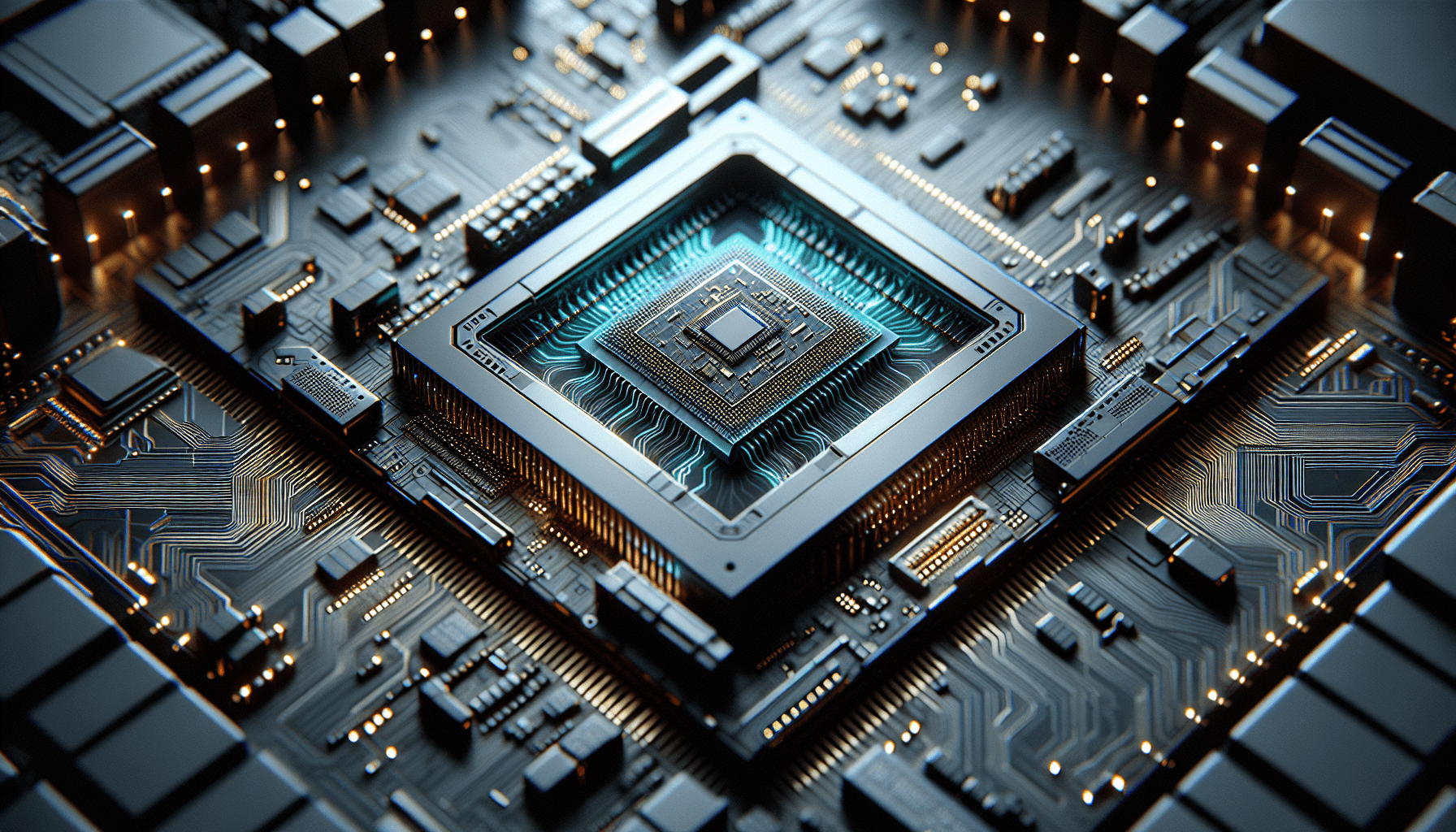In the exciting world of artificial intelligence (AI), the question of what hardware is needed to support its development and applications has become increasingly relevant. From cutting-edge data centers to powerful processors, the demand for the right hardware to enable AI capabilities is growing at a rapid pace. In this article, we will explore the essential hardware components required to fuel the advancements of AI, providing you with a comprehensive understanding of how technological infrastructure plays a crucial role in shaping the future of AI.

Hardware Requirements
Artificial Intelligence (AI) has become an essential part of our lives, from voice assistants to autonomous vehicles. Behind the scenes, the success of AI relies heavily on the computational power and storage capabilities of the underlying hardware. In this article, we will explore the hardware requirements for AI and delve into various components and technologies that make AI possible.
Data Storage
Data is the lifeblood of AI. It encompasses vast amounts of information that AI algorithms use to learn, analyze, and make predictions. Storing this data securely and efficiently is crucial for any AI system. There are several options available when it comes to data storage for AI.
Hard Drives
Traditional hard disk drives (HDDs) provide a cost-effective solution for data storage. They rely on spinning disks and magnetic heads to read and write data. HDDs come in various capacities and are suitable for applications that require high capacity but can tolerate slower data access times. However, they are not well-suited for AI workloads that involve intense data processing due to their relatively slower read and write speeds.
Solid State Drives
Solid-state drives (SSDs) have gained popularity as a faster alternative to HDDs. Unlike HDDs, SSDs use flash memory technology to store data. They offer faster read and write speeds, making them well-suited for AI applications that require rapid access to data. Additionally, SSDs consume less power, generating less heat and reducing the cooling requirements for AI systems.
Network Attached Storage
In AI applications that involve collaboration and shared access to data, network attached storage (NAS) provides a practical solution. NAS devices are dedicated storage units connected to a network, allowing multiple users to access and store data concurrently. NAS devices offer scalability and centralized management, making them ideal for collaborative AI projects where data sharing and accessibility are paramount.
Processing Power
AI algorithms demand immense processing power to handle complex calculations, training deep neural networks, and executing sophisticated computations. Several hardware components fulfill this need for processing power.
Central Processing Units
Central Processing Units (CPUs) are the workhorses of computing. CPUs, also known as processors, are responsible for carrying out instructions and performing calculations. They consist of multiple cores capable of executing tasks in parallel. CPUs are versatile and can handle a wide range of AI workloads. They excel in sequential operations and are well-suited for general-purpose computing tasks.
Graphics Processing Units
Graphics Processing Units (GPUs) were originally designed for rendering graphics, but their massively parallel architecture has made them indispensable in AI. GPUs excel at performing calculations simultaneously on large datasets, making them ideal for AI tasks that involve matrix multiplications and vector operations. Their parallel processing capabilities enable faster training of neural networks and accelerated inference, significantly reducing the time required for AI experiments.
Tensor Processing Units
Tensor Processing Units (TPUs) are specialized AI accelerators designed by Google. TPUs are purpose-built to handle deep learning workloads efficiently. They excel at processing large amounts of data in parallel, delivering exceptional performance for AI tasks. TPUs utilize a custom architecture optimized for matrix operations, making them extremely efficient for training and executing neural networks.
Networking
Networking infrastructure plays a vital role in AI systems, facilitating communication between different components and enabling data transfer across various devices. Fast and reliable networking is essential to ensure seamless exchange of data in both local and distributed AI setups.
Ethernet Switches
Ethernet switches are key components in building reliable, high-speed networks. They enable multiple devices to connect and communicate with each other, providing a scalable infrastructure for AI systems. With the ability to handle large amounts of data traffic, Ethernet switches ensure fast and efficient data transfer between AI servers, storage devices, and other networked components.
Routers
Routers are responsible for directing traffic between multiple networks. They play a crucial role in connecting AI systems to the internet or other external networks. In AI applications that require data access from remote locations or cloud-based services, routers ensure secure and reliable connectivity while managing data traffic efficiently.
Networking Cables
Networking cables form the physical backbone of any network infrastructure. High-quality Ethernet cables, such as Category 6 (Cat 6) or even Category 6A (Cat 6A), ensure fast and reliable data transmission, minimizing latency and data loss. Proper cable management is essential to maintain signal integrity and reduce network disruptions in AI environments.

GPU vs CPU for AI
When it comes to AI, the choice between GPUs and CPUs depends on the specific requirements of the application. Both GPUs and CPUs have their strengths and weaknesses, and understanding these differences is crucial for optimizing AI workloads.
Parallel Processing
GPUs outshine CPUs in parallel processing capabilities. With their thousands of cores, GPUs can handle massive amounts of data simultaneously, allowing for faster training of deep learning models. CPUs, on the other hand, excel in sequential processing and perform well in applications that involve a mix of parallel and sequential operations.
Deep Learning Applications
Deep learning, a subset of AI, involves training and running complex neural networks. GPUs have become the go-to choice for deep learning tasks due to their parallel processing capabilities. TensorFlow and PyTorch, popular deep learning frameworks, take advantage of GPU acceleration to expedite computations and reduce training times. CPUs are still essential for AI tasks that involve inference, real-time decision-making, and non-parallelizable computations.
Efficiency and Power Consumption
GPUs are power-hungry compared to CPUs due to their high computational requirements. While GPUs excel at processing large volumes of data simultaneously, they consume more power and generate more heat. CPUs, being more energy-efficient, are suitable for AI applications that require optimal performance while keeping power consumption and heat generation within constrained limits.
High-Performance Computing
AI often demands massive computing power for processing enormous datasets and performing complex computations. High-performance computing (HPC) systems provide the necessary infrastructure to meet these demands. Let’s explore a few key components and concepts associated with HPC.
Clusters
HPC clusters consist of interconnected computing nodes working together as a unified system. Each node typically contains multiple CPUs or GPUs, collectively providing parallel processing power for AI workloads. By sharing the computational load across multiple nodes, clusters offer scalability and help accelerate AI training and inference tasks.
Supercomputers
Supercomputers are the epitome of HPC, offering unparalleled computational power. These high-performance machines consist of thousands or even millions of processing cores, allowing for incredibly fast data processing and complex simulations. Supercomputers are instrumental in AI research, enabling scientists and engineers to tackle some of the most challenging AI problems.
Cloud Computing
Cloud computing has revolutionized HPC and made it accessible to a broader audience. Cloud providers offer scalable, on-demand computing resources that can be tailored to specific AI requirements. By leveraging cloud-based HPC resources, AI developers can run intricate algorithms, access extensive storage, and tap into massive computing power without significant upfront investments.
Edge Computing
Edge computing brings AI closer to the data source, reducing latency and enabling real-time decision-making. This paradigm shift is particularly crucial in applications where low latency is essential. Let’s explore a few key components associated with edge computing for AI.
Internet of Things (IoT) Devices
IoT devices, such as sensors and smart devices, generate vast amounts of data. By deploying AI algorithms on IoT devices, data processing and analysis can be performed locally, minimizing the need for transmitting sensitive information to cloud servers. This approach improves response times and enhances privacy and security.
Edge AI Accelerators
Edge AI accelerators, also known as AI chips or inference chips, are specialized hardware designed to perform AI computations at the edge. These dedicated processors are optimized for low power consumption and real-time processing, making them ideal for edge computing scenarios. They enable AI algorithms to run directly on the edge devices, enhancing efficiency and reducing reliance on cloud resources.
Low Latency
Reducing latency is a key advantage of edge computing for AI applications. In scenarios where real-time decisions are critical, such as autonomous driving or industrial automation, minimizing the round-trip time between data collection, processing, and response is paramount. Edge computing allows AI algorithms to react instantaneously, improving overall system performance and reliability.
AI Storage Solutions
Storing and managing the massive amounts of data required for AI is a significant challenge. AI storage solutions aim to provide scalable and efficient ways to store and retrieve data for AI applications.
Distributed File Systems
Distributed file systems, such as the Hadoop Distributed File System (HDFS), are designed to handle large datasets across multiple machines. These file systems ensure data durability, fault tolerance, and high scalability, making them suitable for AI workloads. Distributed file systems provide the foundation for distributed AI training, allowing for efficient parallel processing of data across multiple nodes.
Object Storage Systems
Object storage systems, like Amazon S3 or Google Cloud Storage, offer scalable and reliable storage for AI data. These systems store data as objects and provide flexible access mechanisms. Object storage is an excellent choice for AI applications that need to handle vast amounts of unstructured data, such as images, videos, or text documents.
Data Compression Techniques
To handle the vast amounts of data generated in AI applications, data compression techniques play a crucial role. By reducing the size of the data without significant loss of information, data compression enables efficient storage and faster data access. Various compression algorithms, such as gzip or lz4, are used to compress AI datasets while maintaining data integrity and minimizing storage requirements.
AI-specific Hardware
As AI continues to evolve, specialized hardware is being developed to meet the unique demands of AI workloads. Let’s explore a few notable examples of AI-specific hardware.
Neural Processing Units
Neural Processing Units (NPUs) are specialized chips designed for accelerating AI computations, specifically for neural networks. NPUs are highly optimized for matrix operations and deep learning tasks, delivering exceptional inference performance. By offloading AI computations to NPUs, overall system performance can be significantly improved.
Application-Specific Integrated Circuits
Application-Specific Integrated Circuits (ASICs) are custom-designed hardware chips built specifically for a particular application or workload. AI ASICs, such as Google’s Tensor Processing Unit (TPU), are designed to accelerate AI workloads efficiently. ASICs offer significant performance improvements and power efficiency by focusing on specific AI tasks, such as matrix multiplications and convolutions.
Field-Programmable Gate Arrays
Field-Programmable Gate Arrays (FPGAs) are reconfigurable hardware devices that can be customized to accelerate specific computations. FPGAs offer flexibility and versatility in AI applications, allowing for fast prototyping and customization of AI models. FPGAs can be programmed to perform various AI tasks, making them adaptable to changing AI requirements.
Future Trends
As AI continues to advance, several emerging hardware technologies are poised to shape the future of AI development and research. Let’s explore a few notable trends.
Quantum Computing
Quantum computing holds great promise for solving complex AI problems that are beyond the reach of classical computers. Quantum computers utilize quantum bits, or qubits, which can exist in multiple states simultaneously. These systems have the potential to revolutionize AI by exponentially accelerating computations such as optimization algorithms and pattern recognition.
Neuromorphic Computing
Neuromorphic computing emulates the structure and functionality of the human brain, paving the way for highly efficient and adaptable AI systems. This approach focuses on designing hardware inspired by the brain’s architecture, enabling AI algorithms to run more efficiently and mimic complex cognitive processes. Neuromorphic computing seeks to develop AI systems that can learn, reason, and adapt in a manner more similar to human intelligence.
Bio-inspired Hardware
Bio-inspired hardware draws inspiration from biological systems to create innovative AI hardware designs. By emulating the structure and principles of biological systems, such as the brain or the visual system, bio-inspired hardware aims to overcome the limitations of traditional computing architectures. This field explores novel hardware solutions that can process information in parallel, learn continuously, and adapt dynamically.
In conclusion, AI is heavily reliant on hardware that meets its unique requirements. From data storage and processing power to networking infrastructure and specialized AI hardware, choosing the right hardware components is essential to ensure optimal AI performance. As technology progresses, future trends such as quantum computing, neuromorphic computing, and bio-inspired hardware hold the promise of unlocking new frontiers in AI research and development.
